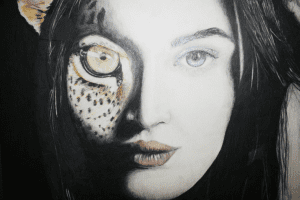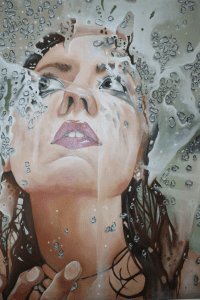Art & Photography
| Name | Role | |
|---|---|---|
| Mrs C Bosworth | Acting Head of Department | |
| Mrs K Knapp | Teacher of Art & Photography | |
| Miss E Coggins | Teacher of Art | |
| Mrs N Khatun | Teacher of Art |
Curriculum Intent Statement For Art And Photography
ART
Art enhances fine motor skills, hand-eye coordination, problem solving skills, lateral thinking, complex analysis and critical thinking skills. No matter what career you choose, those who can arrange, present and display material in a way that is aesthetically pleasing have an advantage. Research shows that involvement in the arts (both Visual Art and Performing Art) is associated with higher levels of attainment in both high school and university.
Art begins with observation of the real world: recording, analysis and creation of a visual response to the surroundings. Art makes students look at the world anew – even mundane, ordinary aspects of the world. Art also fills the soul. There is something magical about smearing pencil and paint across a piece of paper and sculpting form with your hands. Communicating with colour and shape and form awakens the imagination; it opens the door to ‘now’.
The creative industry is an ever-expanding industry that offers a wealth of job opportunities ranging from advertising, architecture, art heritage (museum/gallery conservator), creative design (ceramics, fashion, interior etc.), digital art (computer games design, graphics etc.) display design (exhibitions etc.), photography (corporate, fashion, social, sports etc.) and visual art (animator, graphic design, illustration, fine art etc.)
All Key Stage 3 students follow the National Curriculum in Art and Design and have opportunities to work across a number of art media’s in both two and three dimensions from year 7 to year 8. The lessons also cover a wide range of Art and Artists, from basic pencil shading and the colour wheel to more advanced clay work and sculpture in year 8. At the end of this key stage many students decide to follow GCSE Art and Design. During year 7 and 8 pupils explore the following topics: basic drawing skills, and other cultures. They are encouraged to experiment with Mixed Media, Collage, Drawing & Painting and Digital Photography which all lead up to an informed and original final outcome. The students’ research, make copies and write about an artist or culture in all years. Students have the opportunity to explore different cultures, art movements and different styles, which bring a new meaning to their work through the development of their artistic ideas.
We provide an afterschool Art club for KS3 students every week, where students can continue with their project work and take advantage of the school’s resources using media and techniques that they would not normally be able to use in a KS3 Art lesson.
Key Stage 4
AQA – Fine Art
In year 9, the first project looks at Body Adornment. Students study the forms, styles, the history and practice of relevant artists, creating original, individual painted and constructed three-dimensional pieces using tattoos, Halloween, Day of the Dead and Masks as inspiration. This also includes a visiting artist to demonstrate henna tattoos and allows the students to try it for themselves. The second project looks at Celebrations, which involves the students learning about the artists, making transcriptions of their work, improving their drawing, and painting skills using a variety of media. In year 11, all students have the chance to refine and hone their painting technique and improve their observational skills by looking at portraiture. They will expand their experience in using new materials and media, capturing the essence of Art, through practice and process.
AQA GCSE ART

Art is an option at GCSE where take up of the subject is always very popular. At Key Stage 4, the students have 3 lessons a week. The GCSE course is not a specialised one, which means that any idea is valid and students are free to explore their own ideas within the confines of each project. Art AQA GCSE is a three year course where the students have to submit a portfolio of work as their coursework element (60%), as well as sitting a controlled assessment (exam unit 40%) at the end of the course. The first Unit of work is Body Adornment and we begin by researching contemporary artists Sarah Beetson and Conrad Roset. They learn how to analyze an image and write about the content and their opinion. They then begin to develop their work from photographs taken in the style of the artists researched. They then move on to look at more traditional artists such as Pablo Picasso. Over time the students will look at a variety of art movements and cultural styles and use these to develop their ideas and produce their own individual work. They will use a variety of media and techniques including clay, plaster, mod rock and gum tape, as well as more traditional material such as paint and printmaking.
Towards the end of year 10 they begin their second project on Celebrations. This is more structured and the students are given a task to complete each week as well as producing their own sketchbook at home on an element of Celebrations that they are interested in.
This work then forms the majority of their coursework that gets assessed. We begin by looking at sweets and cakes and move towards typography and Portraiture. The students evaluate their work and annotate all their ideas and processes.
The students then begin to work on their third and final project which is provided by the exam board. They have several months to look at artists work, make copies and develop their ideas using photography. After a period of time the students will have to sit a 10 hour exam where they will produce the final piece for this project.
We have facilities for printmaking, clay and a full time Art technician. We regularly take students on trips to London and local areas of interest like Oadby Botanical Gardens and New Walk Museum.
Key Stage 5
A Level Art

With GCSE Art results regularly achieving 96% A* – C grades there is a strong demand for A ‘Level Art in year 12. The projects follow a similar structure as GCSE, however the work load is more intense having five hours of Art lessons a week with an expectation that students should spend five hours at home each week working in their sketchbook.
We rely on still life drawing and trips to Art galleries as a regular source of inspiration. In year 13 the students work in sketchbooks but have a much more in-depth analysis of artists work and techniques. They produce a 1500 word essay and are encouraged to work on a much larger scale. Both year groups sit an exam at the end of the year and produce a final piece for their work.
We have great success at A level and as a result a large number of students go onto follow Art foundation and University degrees. We have exhibited our work at the Pedestrian Gallery and the Open galleries at the New Walk Museum in Leicester.
Photography
Course information
The course sees photography as an exciting art form through which we can communicate
our observations about our visual world. The act of seeing intelligently and sensitively
is a key concept on this course. On the course we mainly use digital photography, so
therefore it is important that you own a DSLR camera (the department predominantly uses Canon cameras). It is very important that the work we do is seen in the context of other photographers and artists, as this is a rich source of ideas, so a lot of time is devoted to studying these. In order to communicate your ideas effectively you must learn how to use photographic equipment, so you will be shown the expressive potential of cameras and lenses, developing and printing, film, exposure, shutter speed and aperture.
The first project is Basic Photography Techniques where we explore the functions of the camera and learn how to use key components of a digital camera such as, shutter speed, aperture, and ISO. The students are set tasks to demonstrate their understanding and will often research Artists and Photographers to learn about their style and techniques.
The second project is sketchbook based and relates to the theme of Environment. Students are encouraged to think deeply about their own opinions on Environment and reflect on the world around them. They will go on trips to Twycross Zoo and a local farm park to take photographs and develop their skills.
The next project is based on the theme of Broken. Again, this project gives the students an opportunity to explore complex issues such as mental health and allows the students express their thoughts and opinions.
The final main project is based on a past exam theme and the students are guided through their coursework given examples of Photographers work and allowed to develop and explore their own ideas and interests.
The students will sit a final exam in the summer based on a theme provided by the exam board.
Entry Requirements:
In addition to the standard entry requirements, this course also normally requires students to have achieved grade C or above in a GCSE Art or Design subject. Previous photographic experience is useful but not essential, as we start everyone from the very beginning. We will consider applications from students who don’t have Art GCSE but can show they have had experience of photography.


